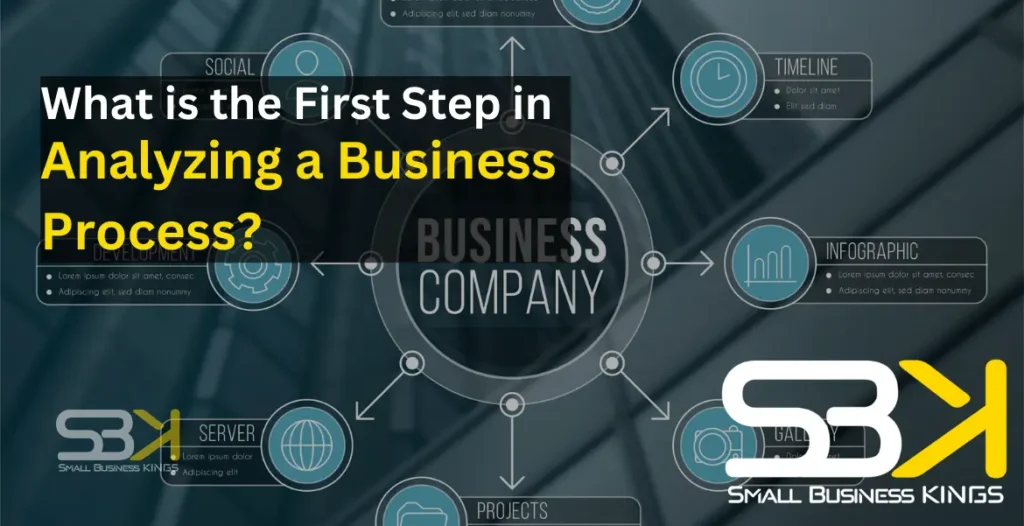Analyzing a business process is a crucial step in improving organizational efficiency, productivity, and overall performance. It involves a systematic approach to understanding, evaluating, and optimizing processes within an organization. This article delves into the first step in this process and its significance.
Understanding Business Processes
Before diving into the analysis, it’s essential to understand what a business process is. A business process is a series of interconnected activities that transform inputs into outputs, aiming to achieve a specific organizational goal.
These activities are usually coordinated across departments and functions to ensure smooth operation.
Business processes typically consist of the following components:
- Inputs: These are the resources or materials required to initiate the process.
- Activities: These are the specific tasks or actions performed within the process.
- Resources: These include human resources, equipment, technology, and other resources needed to complete the activities.
- Outputs: These are the results or deliverables produced by the process.
Find Out More: What Is the Core of Business Analysis? The 6 Core Concepts
Identifying the First Step in Analyzing a Business Process
The first step in analyzing a business process is process identification. This step involves identifying and defining the processes within an organization that need to be analyzed.
Without a clear understanding of the processes involved, it’s impossible to proceed with the analysis effectively.
Defining the First Step: Process Identification
Process identification is the process of recognizing and defining the various activities and workflows within an organization.
It’s about understanding how work gets done, who is involved, and what resources are required. This step lays the foundation for the entire analysis process.
Importance of Identifying the First Step
Identifying the first step in analyzing a business process is crucial for several reasons:
- Clarity: It provides clarity on which processes need to be analyzed and improved.
- Focus: It helps in focusing efforts and resources on areas that have the most significant impact on organizational performance.
- Efficiency: By identifying processes upfront, organizations can avoid wasting time and resources on analyzing irrelevant or non-essential activities.
- Baseline: It establishes a baseline for further analysis and benchmarking against current performance.
Methods of Process Identification
Several methods can be used to identify processes within an organization:
- Interviews with Stakeholders
Conducting interviews with key stakeholders, including employees, managers, and customers, is one of the most effective ways to identify processes. Stakeholders can provide valuable insights into how work is done, what activities are involved, and where there may be inefficiencies or bottlenecks.
- Observational Studies
Directly observing employees as they perform their tasks can provide valuable insights into existing processes. Observational studies allow analysts to see firsthand how work is performed, identify manual workarounds, and uncover hidden inefficiencies.
- Document Analysis
Analyzing existing documentation, such as process manuals, standard operating procedures, and workflow diagrams, can also help identify processes. Document analysis provides a structured overview of existing processes and their components, serving as a valuable reference for further analysis.
- Process Mapping Workshops
Conducting process mapping workshops with cross-functional teams can help identify and document processes collaboratively. These workshops bring together employees from different departments to map out workflows, identify pain points, and brainstorm improvement opportunities.
Challenges in Identifying Business Processes
Despite its importance, process identification comes with its own set of challenges:
Lack of Clarity
Processes within organizations can be complex and interconnected, making it difficult to identify individual processes accurately.
Complexity of Processes
Some processes may involve numerous sub-processes, making it challenging to determine where one process ends and another begins.
Resistance to Change
Employees may resist efforts to analyze and change processes, especially if they fear job loss or increased workload.
Benefits of Identifying Business Processes
Despite the challenges, identifying business processes brings significant benefits:
Efficiency Improvements
- Understanding and documenting business processes helps identify inefficiencies and bottlenecks.
- Streamlining processes leads to reduced cycle times and increased productivity.
- Eliminating unnecessary steps or redundancies improves workflow efficiency.
Cost Reduction
- Optimizing processes reduces resource wastage and lowers operational costs.
- Improved efficiency leads to reduced labor costs and lower resource consumption.
- Identifying cost-effective ways to perform tasks results in overall cost savings.
Quality Enhancement
- Documenting processes allows for better quality control and adherence to standards.
- Identifying and addressing process flaws enhances product or service quality.
- Consistent processes lead to fewer errors and higher customer satisfaction.
Risk Management
- Understanding processes helps identify potential risks and vulnerabilities.
- Implementing control measures mitigates risks and ensures compliance with regulations.
- Improved visibility into processes allows for better risk assessment and management.
Strategic Alignment
- Aligning processes with strategic goals ensures that resources are used effectively to achieve organizational objectives.
- Documented processes provide a clear roadmap for aligning activities with the overall business strategy.
Empowered Employees
- Clearly defined processes empower employees by providing guidelines for performing tasks.
- Standardized processes reduce ambiguity and improve consistency in performance.
- Employees understand their roles within the organization, leading to higher job satisfaction and morale.
FAQs
- Can process identification be automated?
Yes, there are software tools available that can assist in identifying and documenting processes within an organization
- How long does the process identification phase usually take?
The duration can vary depending on the size and complexity of the organization. It can take anywhere from a few weeks to several months.
- What if stakeholders provide conflicting information during interviews?
In such cases, it’s essential to conduct further investigation and analysis to reconcile the discrepancies.
- Are there any risks involved in process identification?
One risk is oversimplifying processes, which can lead to overlooking critical steps or dependencies.
- How often should organizations revisit their process identification efforts?
It’s recommended to review and update process documentation regularly, especially when there are significant changes in the organization or its operations.




